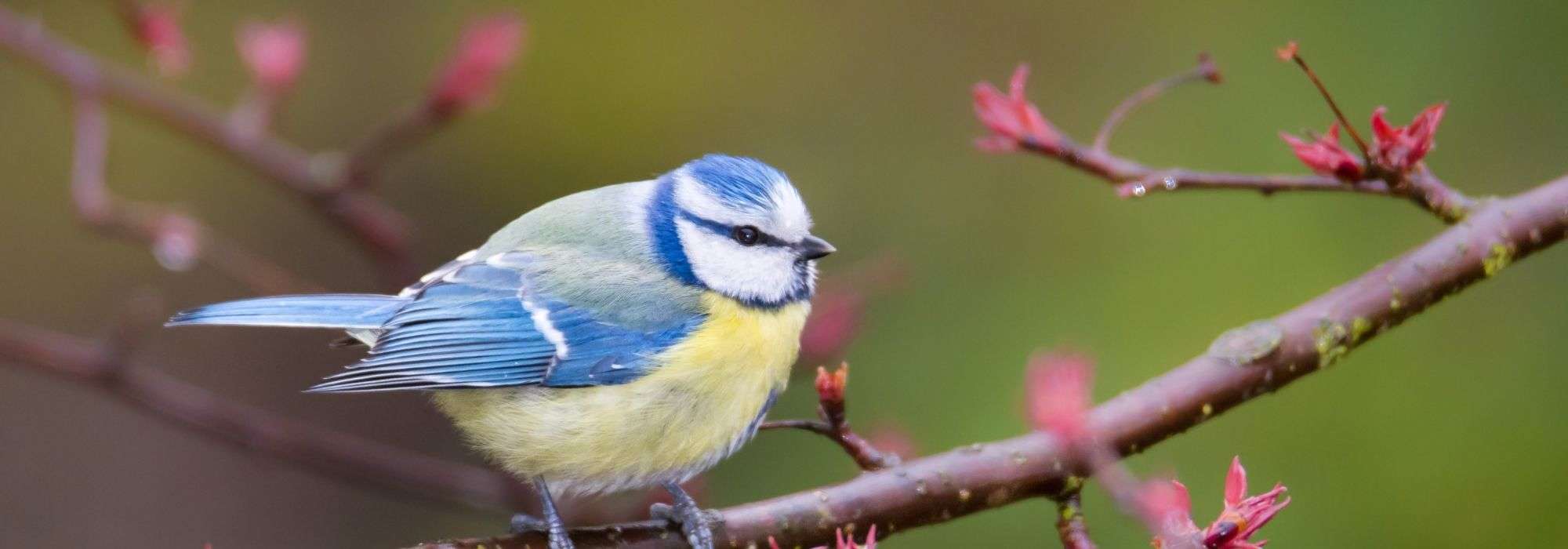
How to attract birds to your balcony?
8 tips and tricks for a bird-friendly balcony
Contents
You love birds and dream of seeing them visit your balcony from time to time? It’s very simple, just offer them what they love: plants, food, and a quiet corner where they can take refuge without fear. With a few adjustments and some patience, you should soon be able to observe them. Discover all our tips for enjoying birdwatching on your balcony.
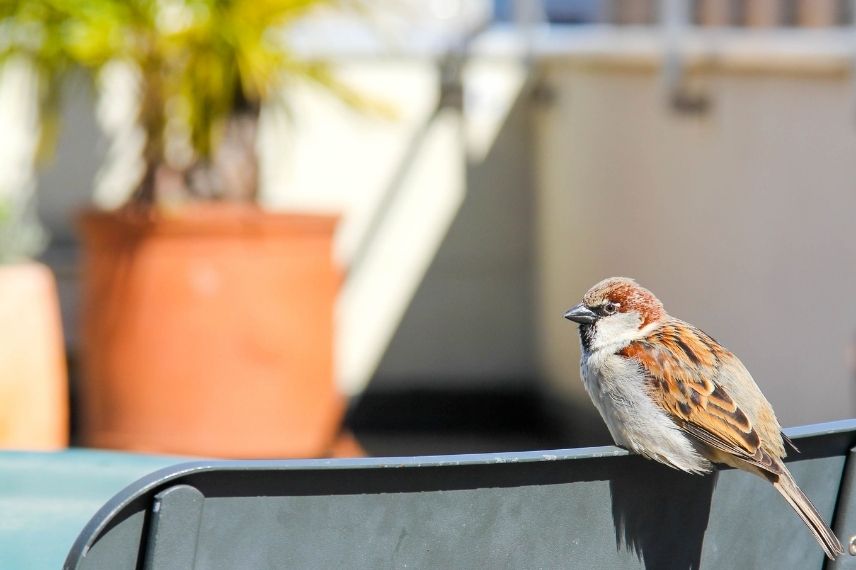
Flowering your balcony
- Birds are attracted to plants. They feed on the insects that live there, as well as the seeds, fruits, or berries that the plants produce. The first thing to do to attract birds to your balcony is therefore to install plants that they like. This will make your balcony a paradise for birds, and they will return with pleasure.
- You can grow all sorts of wildflowers that will attract insects and consequently different species of insectivorous birds: cornflowers, cosmos, gaura, scabious, and sunflower flowers, whose seeds are adored by tits.
- You can also grow melliferous plants that attract insects, as well as climbing plants with abundant foliage, where they can hide, such as wisteria or honeysuckle.
Read also
What do the birds in our gardens eat?Installing bushes or climbing plants in pots
- In nature, birds find refuge in small hedges or bushes;
- When it comes to bushes, birds prefer those that produce fruits or berries and are thorny as they protect them from potential predators;
- For example, install a wild rose or a dog rose in a pot which will be appreciated for its hips, small orange-red fruits;
- You can also plant an olive tree, from which blackbirds will come to eat the olives;
- A elder, a rowan, or a blackthorn in a pot will also make a pleasant refuge and a source of food for small birds;
- Finally, don’t forget climbing plants like ivy or honeysuckle.
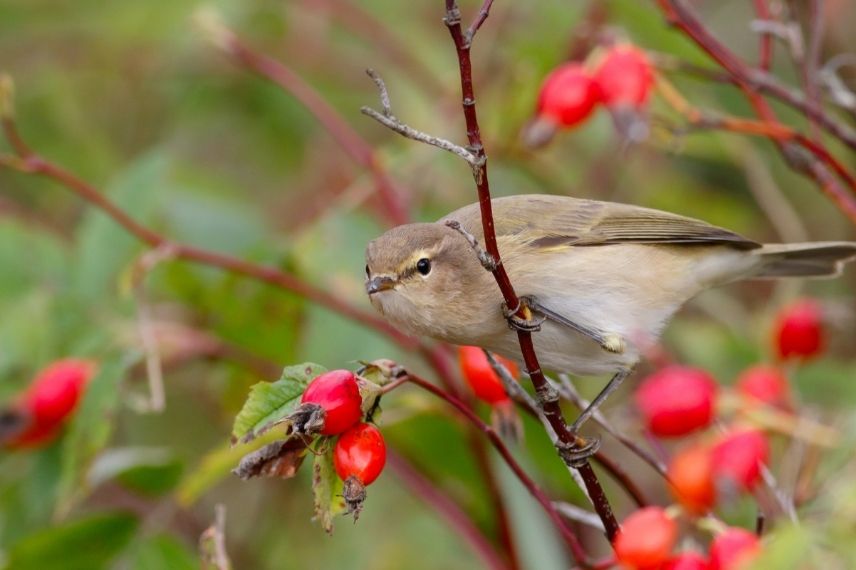
The fruits of the dog rose are highly appreciated by birds.
Give them food
In addition to the insects, berries, and fruits provided by nature, birds need a helping hand to survive between winter and spring. Indeed, when it’s cold and freezing, they struggle to find enough food. This is the time to offer them seeds, fat balls (ideally homemade or carefully removing the netting), or even fruits, depending on the dietary habits of each bird species.
- To attract great tits, nothing beats sunflower seeds, which are a real treat for them. Rich in lipids, sunflower seeds provide a lot of energy to get through winter.
- Fat balls also attract both coal tits and blue tits, as well as sparrows and jays.
- Mixtures of sunflower seeds, millet, oats, wheat, and corn are also enjoyed by all types of birds: tits, robins, and other seed-eating species.
- You can also try crushed peanuts, walnuts, hazelnuts, and almonds.
- Blackbirds and thrushes appreciate fruits. You can offer them small pieces of ripe apple, pear, and grape.
Provide food in small quantities and regularly, preferably at the same time each day, for example in the evening, so they can feed early the next morning.
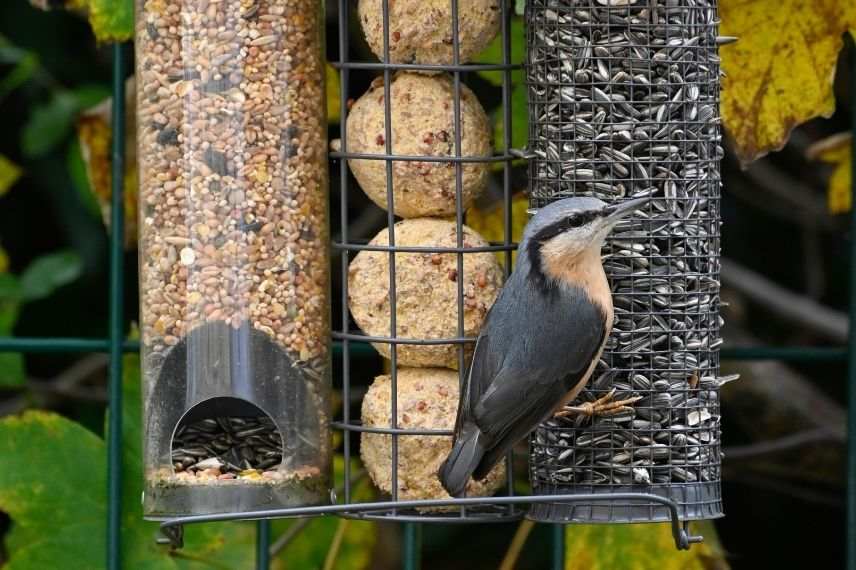
Install a bird feeder and possibly a bird box
- There are all types of bird feeders: tube, platform, hanging, or on a stand.
- In urban areas, smaller birds can be hindered by larger ones that dominate. Additionally, it is prohibited to feed pigeons.
- To prevent pigeons, magpies, and other crows from disturbing the smaller birds, you can install a feeder with small edges and hang it from a branch of a bush or climbing plant.
- Limit disturbances by installing discreet feeders that are not too large to avoid attracting a crowd of birds.
- Place the feeder above a pot of plants so that waste does not fall into the courtyard of the building or onto your balcony.
- Install a birdhouse but ensure the entrance hole is oriented away from prevailing winds to protect the birds and chicks from the elements (East or even South-East).
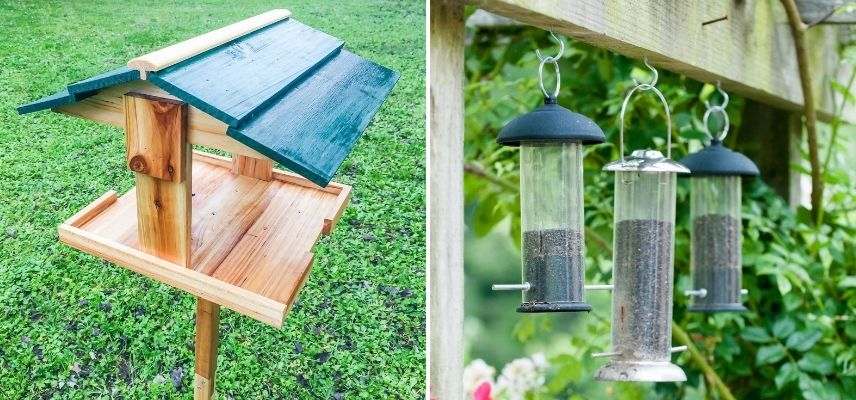
Platform feeder on a stand or hanging tube feeders
Offer them water
- Birds also need to drink and bathe
- Provide them with a shallow dish of water
- Do not add anything to the water: no salt, no antifreeze of course
- You can also place a small fountain, ensuring that access is easy and that birds do not risk drowning. For example, place a mesh to allow them to drink without falling into the water
- In winter, just provide them with drinking water. If they bathe, they risk freezing.
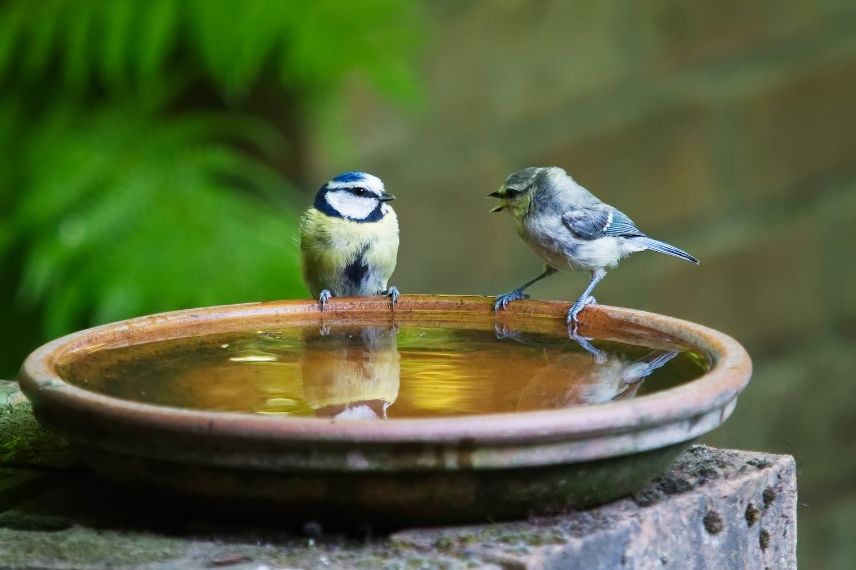
A simple dish of water allows birds to drink or bathe.
Clean as often as possible
- Check the hygiene of feeders and water dishes regularly
- Change the water daily
- If the seeds are wet from rain or contaminated, replace them and clean the feeders
Install a bird box
- If you want to help birds rest, you can install a nest box above a pot of plants.
- Place it in a quiet spot, sheltered from wind and direct sunlight, with the entrance hole ideally facing East or South East
- Wooden nest boxes are preferable
- Clean it if necessary before installing
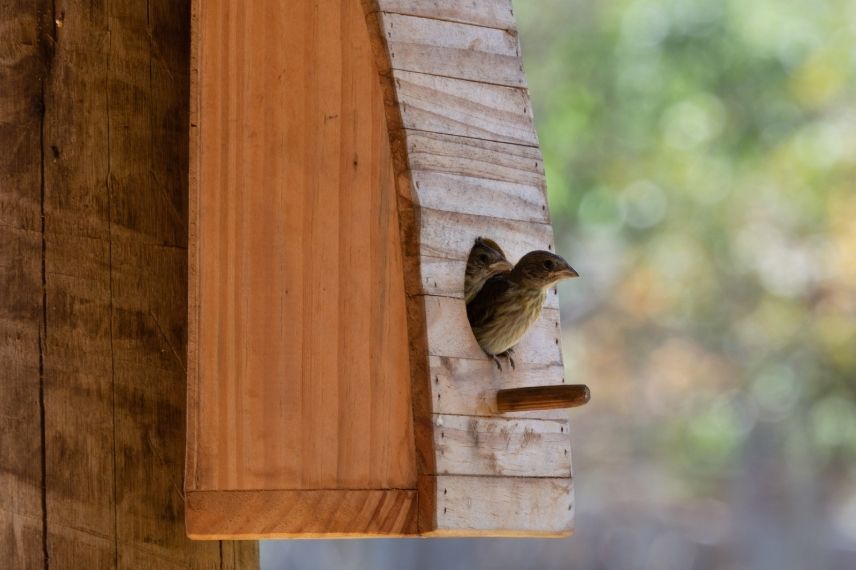
A little haven of peace
- Make your balcony a quiet place where birds are not too disturbed
- Keep cats and dogs away, as they can scare off sparrows and tits
- Let nature and plants express themselves and do not use any pesticidal products
Once this little haven of peace for small birds is set up on your balcony, observe them. If you wish, you can even participate in the counting operations of the LPO observatory (French League for the Protection of Birds), which usually takes place in January and May.
To go further
- Browse Virginie’s tips for feeding birds in winter and the bushes where birds find refuge.
- Subscribe!
- Contents
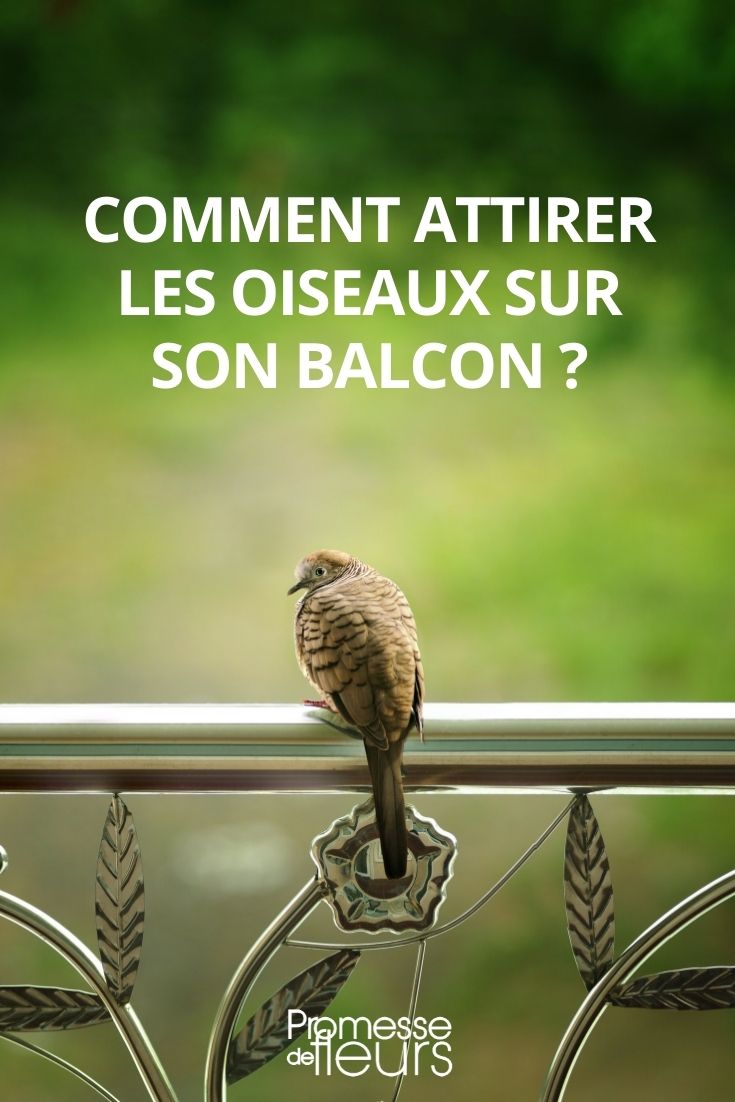































Comments